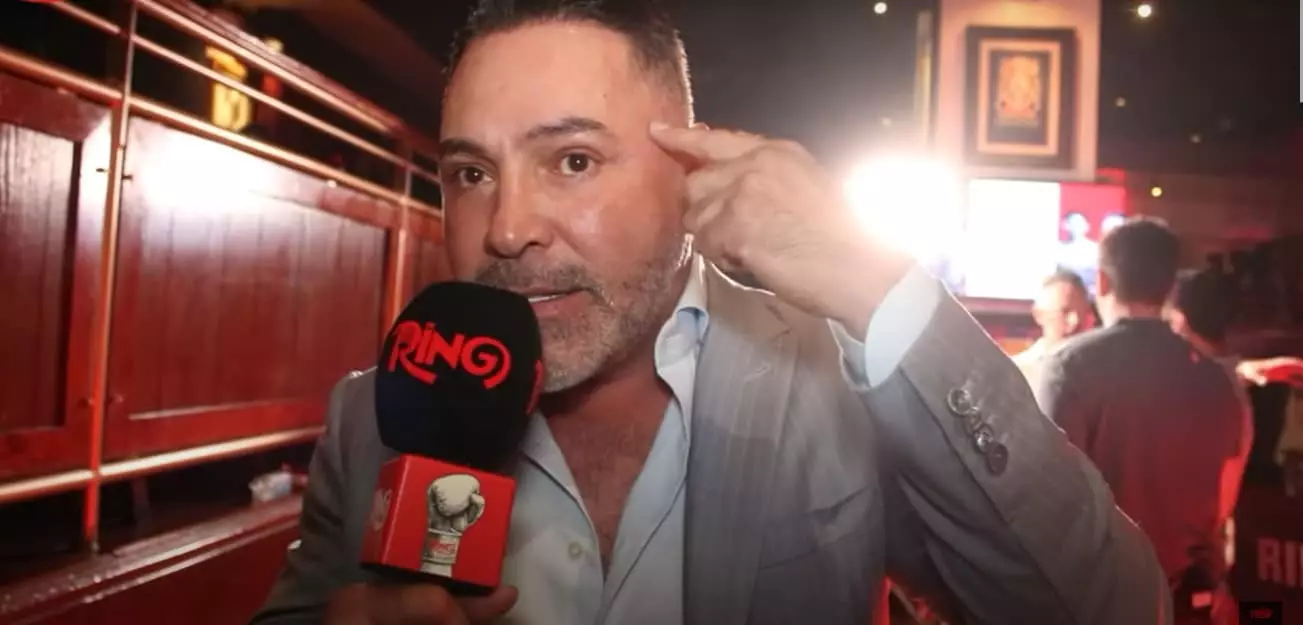Boxing is more than just physical prowess; it is a mental battlefield where psychological tactics can decisively influence the outcome. Promoters and fighters often underestimate the power of mental manipulation, but Oscar De La Hoya’s recent comments highlight how strategic provocation can unnerve an opponent. De La Hoya’s attempt to rattle Edgar Berlanga by publicly questioning his authenticity—particularly through the fake jewelry stunt and personal digs—exposes his belief that mental destabilization is vital in gaining a competitive edge.
What’s revealing here is the intentional approach to provoke insecurity. By openly questioning Berlanga’s mental stability, De La Hoya is attempting to induce doubt, distraction, and frustration. This tactic, while controversial, underscores a deeper truth about boxing: psychological resilience often separates champions from pretenders. If Berlanga enters the ring with self-doubts lingering, his physical skills might be overshadowed by mental fragility. This strategy, whether fair or foul, emphasizes the significance of mental toughness and how it can determine victory or defeat in such high-stakes environments.
Authenticity as a Cultural and Personal Identity
Beyond the physical and psychological chess match, an undercurrent in this feud revolves around authenticity—specifically, Berlanga’s claimed Puerto Rican heritage. De La Hoya’s insistence that Berlanga’s identity is superficial points to a broader issue: the importance of cultural roots in boxing. For fighters, claiming a heritage can be a source of pride, motivation, and identity. When that connection is questioned or seen as inauthentic, it threatens their confidence and public perception.
De La Hoya’s critique isn’t just personal; it taps into the importance of genuine representation. This issue raises questions about how much identity matters in sports and whether the pride tied to heritage influences a fighter’s mental state. If Berlanga is perceived as pretending or superficially adopting a culture he hasn’t truly lived, it might erode his internal conviction. For boxing, where mental clarity and confidence are paramount, such doubts—whether externally imposed or internally felt—can have profound consequences on performance.
The Illusion of Fame and the Power of Appearance
De La Hoya’s focus on jewelry, fake diamonds, and outward symbolism reflects a broader commentary on superficial appearances versus true substance. In boxing, flashy jewelry and packaging can create an illusion of success and wealth, but these external markers can be deceptive. The critique that Berlanga’s jewelry is fake symbolizes a larger narrative about the hype versus reality—the false front that some fighters cultivate to impress fans and peers.
This obsession with appearances can distract from genuine skill and mental preparation. De La Hoya’s assertion that Berlanga’s jewelry is fake is a deliberate attempt to strip away superficiality and question whether the fighter has the internal qualities necessary for true greatness. In essence, the message is that true power comes from within, not from external displays of wealth or bravado. For Berlanga, this serves as a reminder that substance beats style when the stakes are high.
The Broader Implications for Fighters and Promoters
This episode reveals a deeper conflict in boxing: the ongoing battle between authenticity and spectacle. Promoters like De La Hoya often walk a fine line—they need to sell fights with theatrics but also want to see genuine fighters succeed. Their tactics may sometimes border on manipulation, but they also expose the importance of mental fortitude.
For fighters, the key lesson is that confidence and resilience are as critical as physical skill. The mental game can sway the outcome of a fight more than many realize. Berlanga’s struggles against less formidable opponents and the scrutiny about his background underscore how fragile a fighter’s mental state can be. This environment fosters a challenging reality: trusting in oneself becomes paramount amid external distractions and psychological warfare.
Moreover, the debate about heritage, authenticity, and external showmanship reflects the complex identity landscape fighters navigate. It’s not just about winning in the ring; it’s about maintaining inner conviction in a sport where image and perception often overshadow substance. Promoters and fighters alike need to recognize that true strength lies in mental clarity and rooted confidence—qualities that cannot be manufactured with jewelry or superficial masks.

